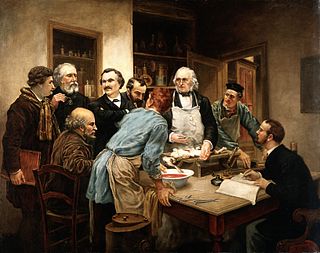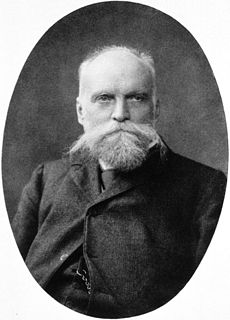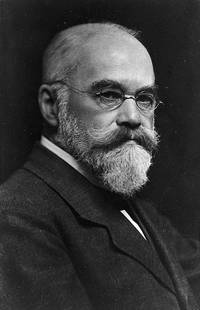
Salomon Moos (15 July 1831 – 15 July 1895) was a German otologist born in Randegg, a village in the Grand Duchy of Baden.

The Grand Duchy of Baden was a state in the southwest German Empire on the east bank of the Rhine. It existed between 1806 and 1918.
Contents
He studied medicine at the University of Heidelberg, and following graduation worked as an assistant at the medical clinic of Karl Ewald Hasse. Afterwards, he continued his education in Prague and Vienna, and in 1859 became privat-docent at Heidelberg. In 1866 he was an associate professor, later being appointed director and chief surgeon of the otology clinic at the University of Heidelberg.

Karl Ewald Hasse was a German physician and professor of special pathology, born in Dresden. He was the son of historian Friedrich Christian August Hasse (1773–1848).

Prague is the capital and largest city in the Czech Republic, the 14th largest city in the European Union and the historical capital of Bohemia. Situated in the north-west of the country on the Vltava river, the city is home to about 1.3 million people, while its metropolitan area is estimated to have a population of 2.6 million. The city has a temperate climate, with warm summers and chilly winters.

Vienna is the federal capital and largest city of Austria, and one of the nine states of Austria. Vienna is Austria's primate city, with a population of about 1.9 million, and its cultural, economic, and political centre. It is the 7th-largest city by population within city limits in the European Union. Until the beginning of the 20th century, it was the largest German-speaking city in the world, and before the splitting of the Austro-Hungarian Empire in World War I, the city had 2 million inhabitants. Today, it has the second largest number of German speakers after Berlin. Vienna is host to many major international organizations, including the United Nations and OPEC. The city is located in the eastern part of Austria and is close to the borders of the Czech Republic, Slovakia, and Hungary. These regions work together in a European Centrope border region. Along with nearby Bratislava, Vienna forms a metropolitan region with 3 million inhabitants. In 2001, the city centre was designated a UNESCO World Heritage Site. In July 2017 it was moved to the list of World Heritage in Danger.
His better known research involved diseases of the inner ears' labyrinth. Moos is credited with being the first physician to point out that in certain infectious diseases, micro-organisms within the labyrinth negatively affect hearing and equilibrium.

The inner ear is the innermost part of the vertebrate ear. In vertebrates, the inner ear is mainly responsible for sound detection and balance. In mammals, it consists of the bony labyrinth, a hollow cavity in the temporal bone of the skull with a system of passages comprising two main functional parts:
















